Right ascension 3 19 51.5 Redshift 0.016898 | Declination +41° 34′ 25″ Magnitude 14.7 Apparent magnitude (V) 14.7 | |
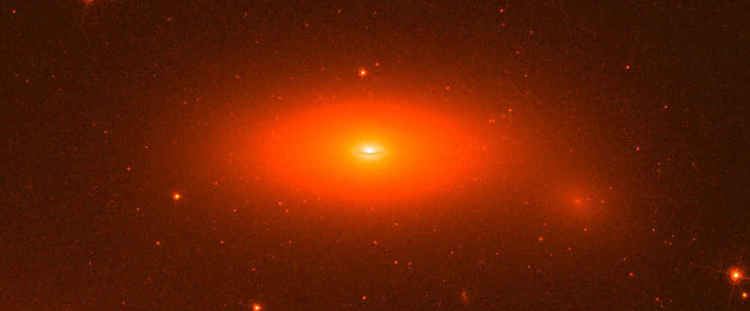 | ||
Type Lenticular galaxy, peculiar galaxy Similar | ||
Remco van den bosch on the giant black hole in the galaxy ngc 1277
NGC 1277 is a lenticular galaxy in the constellation of Perseus. It is a member of the Perseus Cluster of galaxies and is located approximately 73Mpc (Mega parsecs) or 220 million light years from the Milky Way. It has an apparent magnitude of 14.7. It was discovered on December 4, 1875 by Lawrence Parsons, 4th Earl of Rosse.
Contents
- Remco van den bosch on the giant black hole in the galaxy ngc 1277
- Giant black hole galaxy ngc 1277
- Supermassive black hole
- References
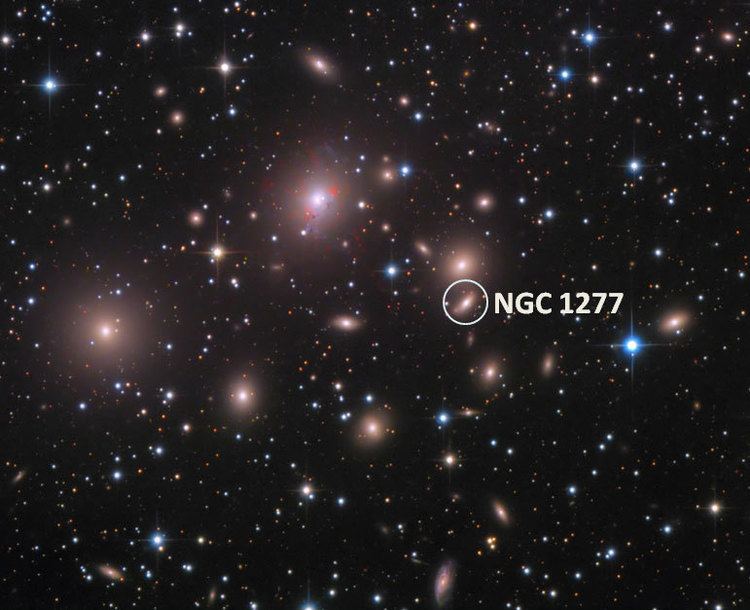
NGC 1277 has been called a "relic of the early universe" due to its stars being formed during a 100 million year interval about 12 billion years ago. Stars were formed at a rate of 1000 times that of the Milky Way galaxy's formation rate in a short burst of time. Then this generation process shut off leaving NGC 1277 populated with metal-rich stars about 7 billion years older than our Sun. It is still uncertain whether or not NGC 1277 is a "relic galaxy" current studies are still researching the possibility.
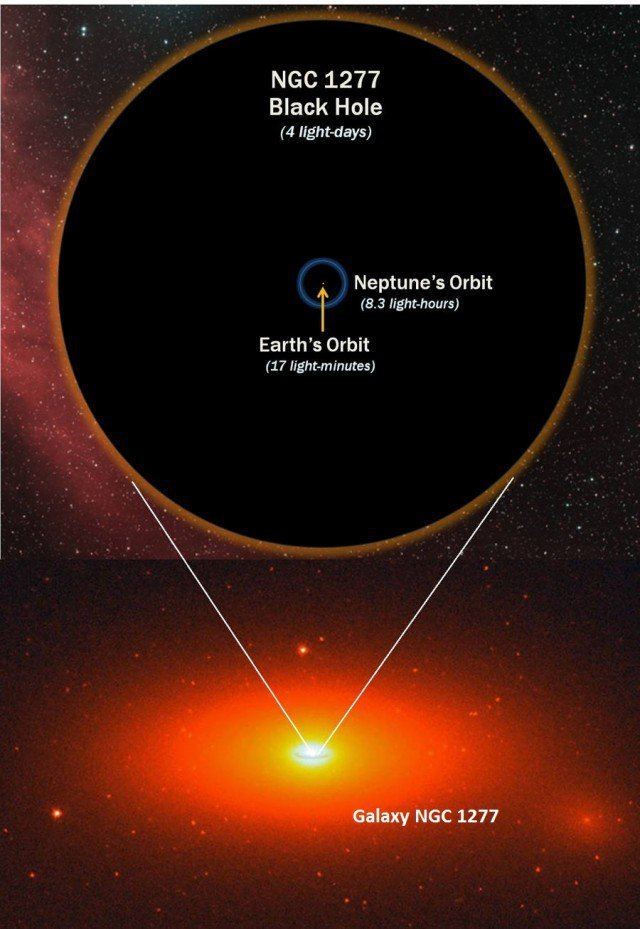
Giant black hole galaxy ngc 1277
Supermassive black hole
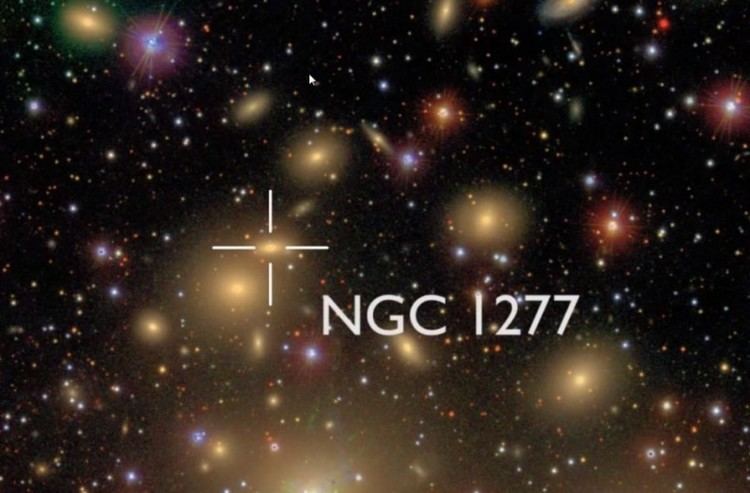
Initial studies of NGC 1277 detected the possible presence of a supermassive black hole at the center of this galaxy.
Observations made using the Hobby-Eberly Telescope at Texas's McDonald Observatory, suggested the presence of a black hole with a mass of about 7040338053500000000♠1.7×1010 M☉ (17 billion solar masses) , equivalent to 14% of the total stellar mass of the galaxy due to the motions of the stars near the center of the galaxy. This makes the black hole in NGC 1277 one of the largest known, in relation to the mass of its host galaxy.
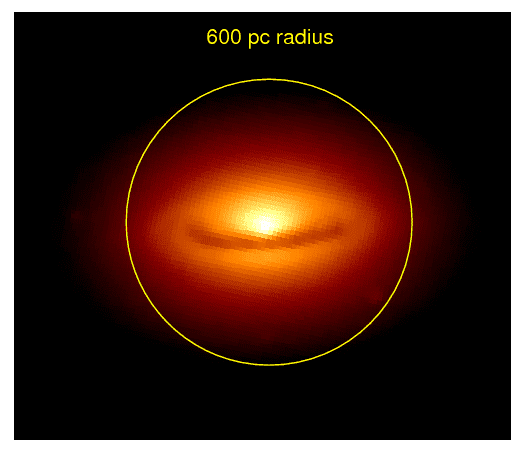
A follow up study, based on the same data and published the following year, reached a very different conclusion. The black hole that was initially suggested at 7040338053500000000♠1.7×1010 M☉ was not particularly over massive. The black hole was estimated to be between 2 and 5 billion solar masses. This is about less than a third of the previously estimated mass which is significantly lower. Models with no black hole at all were found to provide reasonably good fits to the data, including the central region. Nevertheless, it still remains as one of the most massive black holes ever discovered, at 29.6 billion kilometers in diameter - almost five times the distance from the Sun to Pluto.
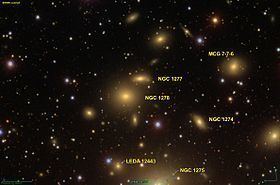
Recent studies have been conducted using adaptive optics to acquire a better estimate of the mass of the black hole.
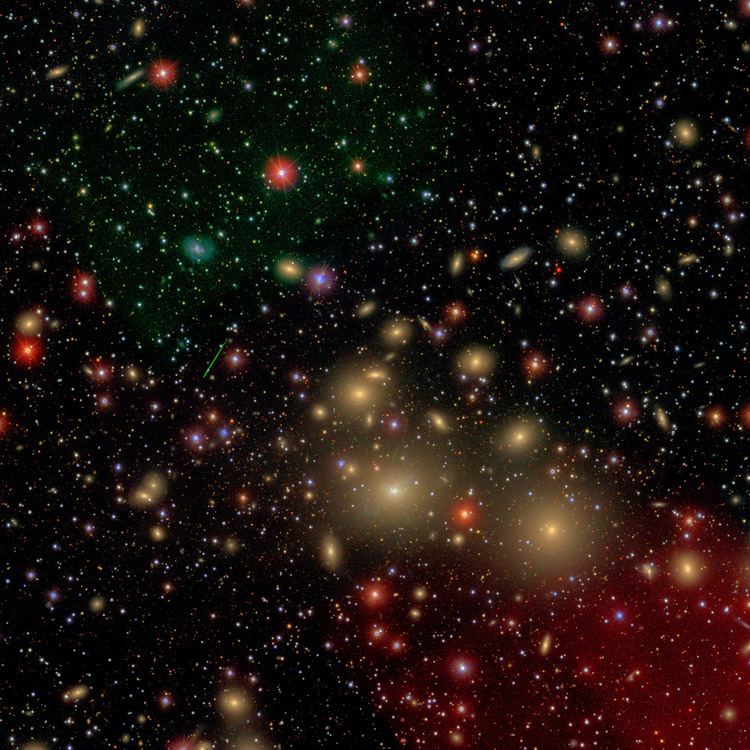
A group made observations used Gemini Near infrared Integral Field Spectrometer to better determine the mass of the black hole at the center of NGC 1277. The group used similar models to that of van den Bosch but with higher resolution. After using stellar dynamics and luminosity models to estimate the mass of the black hole they came to a mass of 7039974389500000000♠4.9×109 M☉ similar to the follow up study done by Emsellem which estimated a mass between 2-5 solar masses. With this mass NGC 1277 still contains one of the most massive black holes but whether it is still considered a supermassive black hole is still to be determined.
More recently a group made observations using the Keck I Telescope and a black hole with mass 7039238626000000000♠1.2×109 M☉ fit the models the best. This value agrees with the studies done by Walsh and Emsellem though it is still four times smaller than reported and is one order of magnitude smaller than first reported by van den Bosch.
